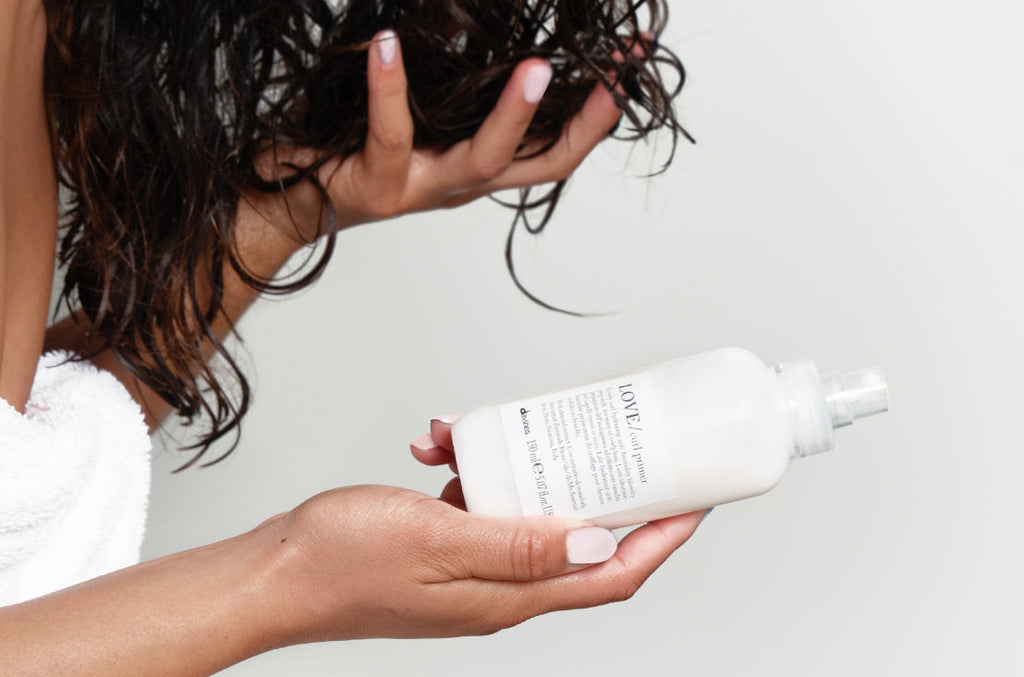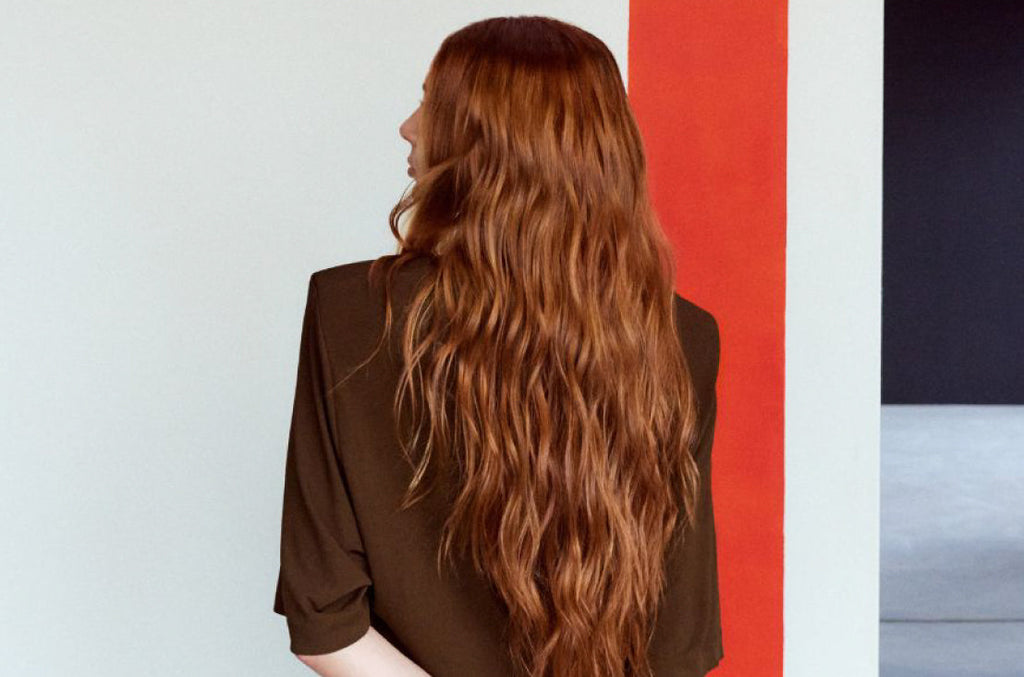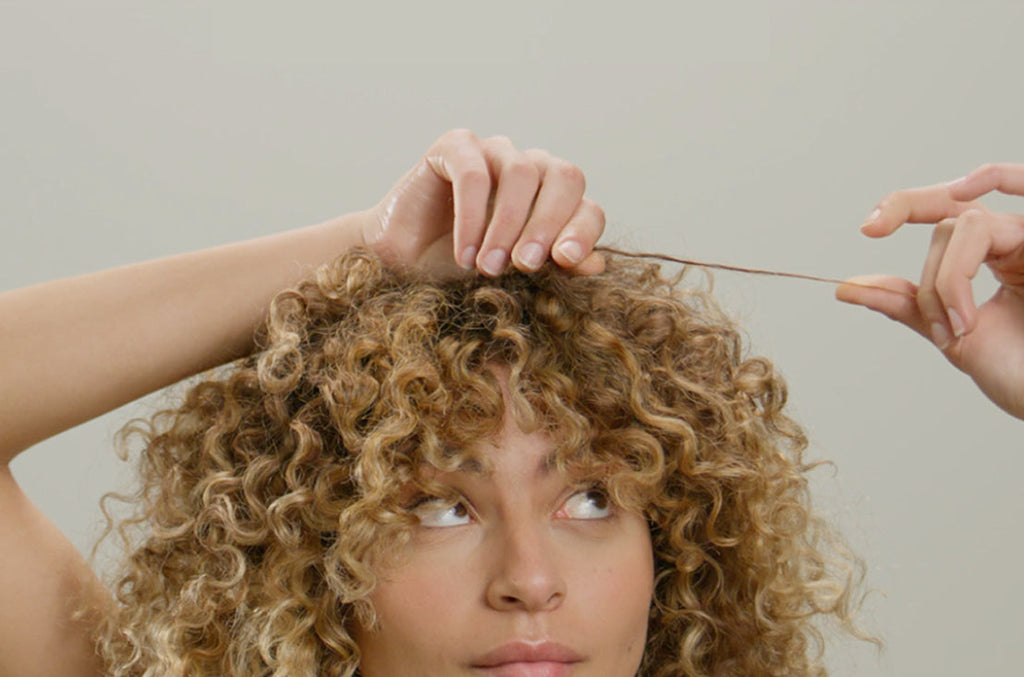Pay with Klarna
Free Carbon Neutral Shipping On Orders $75+, Plus Free Samples!
Pay with Klarna
Free Carbon Neutral Shipping On Orders $75+, Plus Free Samples!
Chemically damaged hair can be an annoying side effect of keeping up with your favorite hair color trends. Add in the environment, heat styling, and the wear and tear of your everyday hair care routine and eventually it’s time to do something about the dry, frizzy state our strands are in. When the hair damage catches up to you, it's important to have an arsenal of products, tips and tricks to heal your strands and bring your hair back to its healthiest state.
How do you know if your hair has damage?
Chances are you have some level of hair damage, most people do. If you’ve ever lightened or colored your hair, or had another form of chemical treatment like a perm or relaxer, you’re probably dealing with chemically damaged hair. But it’s not just chemicals that cause damage to your hair; any kind of significant traction can lead to hair damage. This includes everyday styling like brushing your hair or putting it into a ponytail. Each of your hair strands has three layers. The inner layer is called the medulla, which is surrounded by the middle layer, the cortex. The outer layer is called the cuticle. The cuticle is the layer that protects your hair, and when it is damaged, your hair becomes fragile and almost straw-like.
Photo by Cassell Ferere
Types of hair damage
Hair damage can show up as the following hair woes in order of least to most severe:
If you’re suffering from any of the hair headaches above, healthy hair might seem like a million miles away, but don’t fret! It’s possible to salvage even the most chemically damaged hair with the right products and tricks. Read on for our advice!
Photo by Cassell Ferere
Hacks and fixes for repairing hair damage
Wash your hair less and condition it more!The natural oils from your scalp help to reduce damage so lather up only two to three times a week. Make sure to use a nourishing shampoo and moisturizing conditioner. And chemically damaged hair calls for a nourishing leave-in treatment to combat split ends.
Pay special attention to your scalp.A healthy scalp provides a healthy environment for new strands to grow. Cleansing your scalp with a purifying gel at least twice a week will keep it moisturized and can help prevent further damage.
End your showers with a cool rinse.Rinsing your hair with cool water after you wash seals the cuticle so that your hair looks healthy and shiny. Bring dry, frizzy hair back to life with a shot of cool water at the end of your next shower!
Start hair-masking immediately.To make sure your thirsty strands are quenched and keep brittle hair at bay you need to incorporate a hair mask, at least weekly. A super-hydrating deep conditioning hair mask will leave your hair with newfound strength and shine.
Photo by Cassell Ferere
Be gentle when you brush.Even combing or brushing can cause breakage to your hair over time. Look for brushes or combs that are specifically designed to de-tangle the hair gently.
Only comb your hair when it's dry.Your hair is in its most fragile state when it's wet, making that the worst time to run a comb through it. Use your comb or brush to detangle your hair before washing, combing through through the ends first and moving up to the roots.
Swap out your regular towel for a microfiber one.Normal towels rough up the hair’s cuticle, causing the shingle-like coating of the hair shafts to lift up instead of lying flat, resulting in breakage and frizz. A microfiber towel absorbs excess water like a sponge, without the damage.
Cool it on the heat.It's never a good thing to apply too much heat to your strands but this is especially true if your hair has chemical damage. It's already been compromised, so adding heat is likely to result in further damage.
But if you MUST heat style...
It’s unrealistic to think you won’t still need to heat-style (even occasionally) so it’s important to arm yourself with a few golden rules before grabbing for your hot tools.
Photo by Cassell Ferere
Get regular trims.Removing split ends may seem counterproductive if you’re trying to stop hair from breaking, but it’s the only way to stop further damage on the weaker parts of the hair where damage is already present.
Add some layers.Sometimes the damage is so severe and the breakage is so obvious, you’ve just got to go with it. Ask your stylist to add some layers to disguise the damage. A choppy, layered cut will add movement, giving new life to damaged hair.
Stay away from elastic hair ties.Hair ties made out of elastic can knot up your strands, pulling at them and breaking them as you style. Replace them with silk hair scrunchies. They work just as well and are kinder to your hair, plus they don't leave a dent in your hair the way an elastic hair tie does.
Eat more protein and healthy fats.Diet plays an important role in keeping both your skin and hair healthy. Protein-rich foods sustain the growth, strength, and volume of the hair. Good fats like Omega-3s are also essential. Add things like eggs, salmon, walnuts and flax or chia seeds to your diet to help heal your damaged hair from the inside out.
Try a bond-building hair treatment.A bond-building hair treatment is a mask or conditioner containing high levels of proteins to help repair the broken proteins in your hair, making strands stronger, and less likely to be damaged in the future.
Protect your hair from the sun.Too much time in the sun can wreak havoc on your hair, if it’s not protected. The UV exposure can lead to a break down in the protein of your strands, causing breakage or even hair loss. Protect your hair the same way you do your skin before your next day in the sun by using a UV protection spray.
Use a hair oil on your ends.Oils are deeply moisturizing and can replenish lost lipids in damaged strands. Hair oil adds shine and softness to chemically damaged hair while also detangling and fighting frizz, working especially well on coarse or dry hair. Run a few drops through your damp or dry hair, focusing mostly on the ends.
Sleep on a silk pillowcase.Believe it or not, even sleeping can cause hair damage. As your hair rubs against your pillow, the friction causes the cuticle to ruffle. The slippery smooth texture of silk helps prevent this fiction that results on tangles, frizz and damage to your hair.
You can tame the dryness and frizz associated with chemically damaged hair (including the damage from heat styling and everyday wear and tear) with a few hair hacks and quick fixes, including using products for damaged hair. And If you’re interested in the science behind how the Nourishing family of bond-building hair treatments repair chemically damaged hair, see our previous post, Repair Your Damaged Hair with a Bond Building Treatment.
by Jaclyn LaBadia, featured contributor
cover photo by Cassell Ferere
Subscribe
Sign up to hear about product recommendations, styling how-to's, tips & tricks, and more!
Plus, Free Shipping on your first order!
Join our newsletter to enjoy free shipping on your first order.
By submitting this form, you agree to receive the latest news, updates, promotions, and other marketing information from Davines North America, Inc. by email.



Leave a comment
Comments will be approved before showing up.